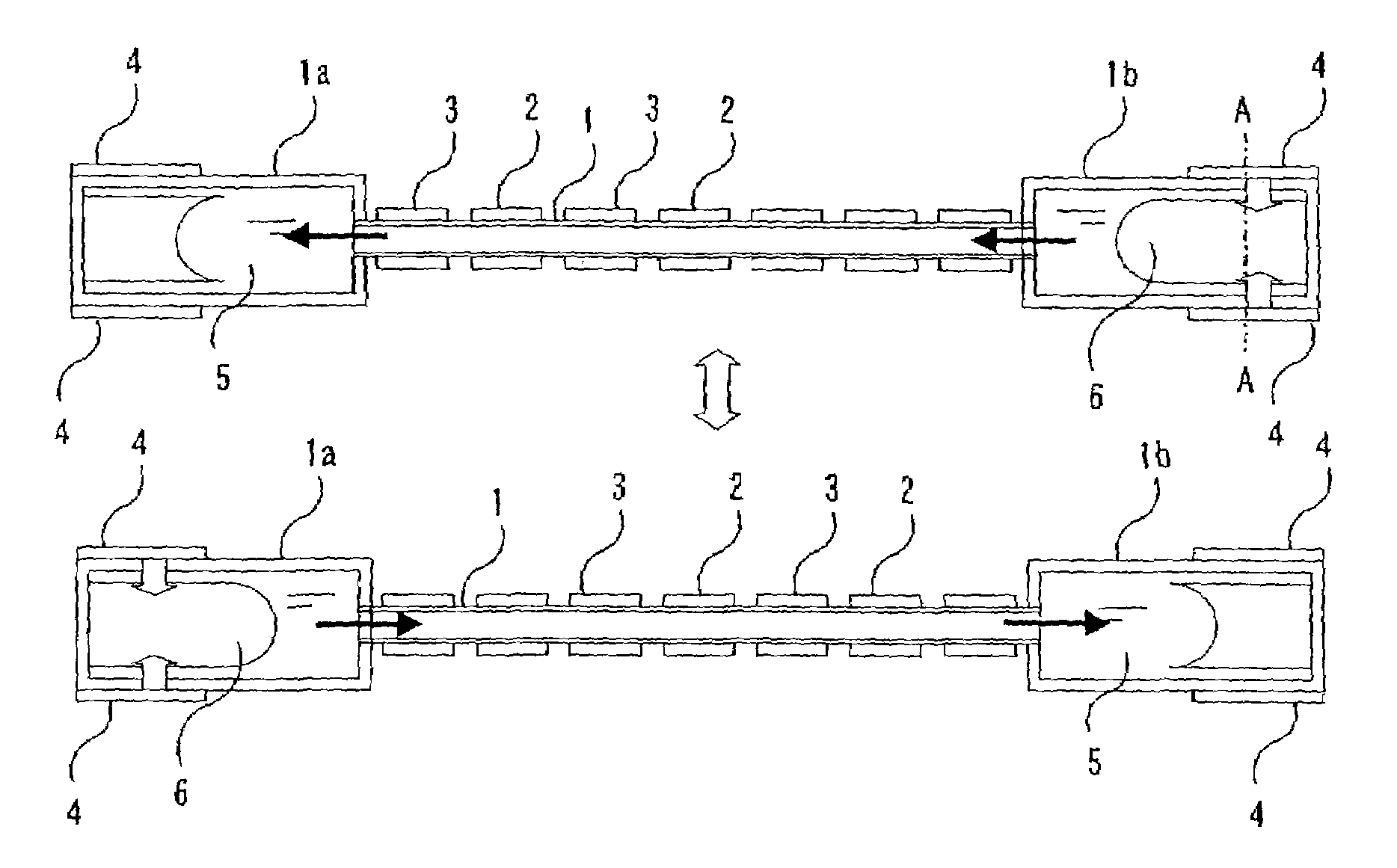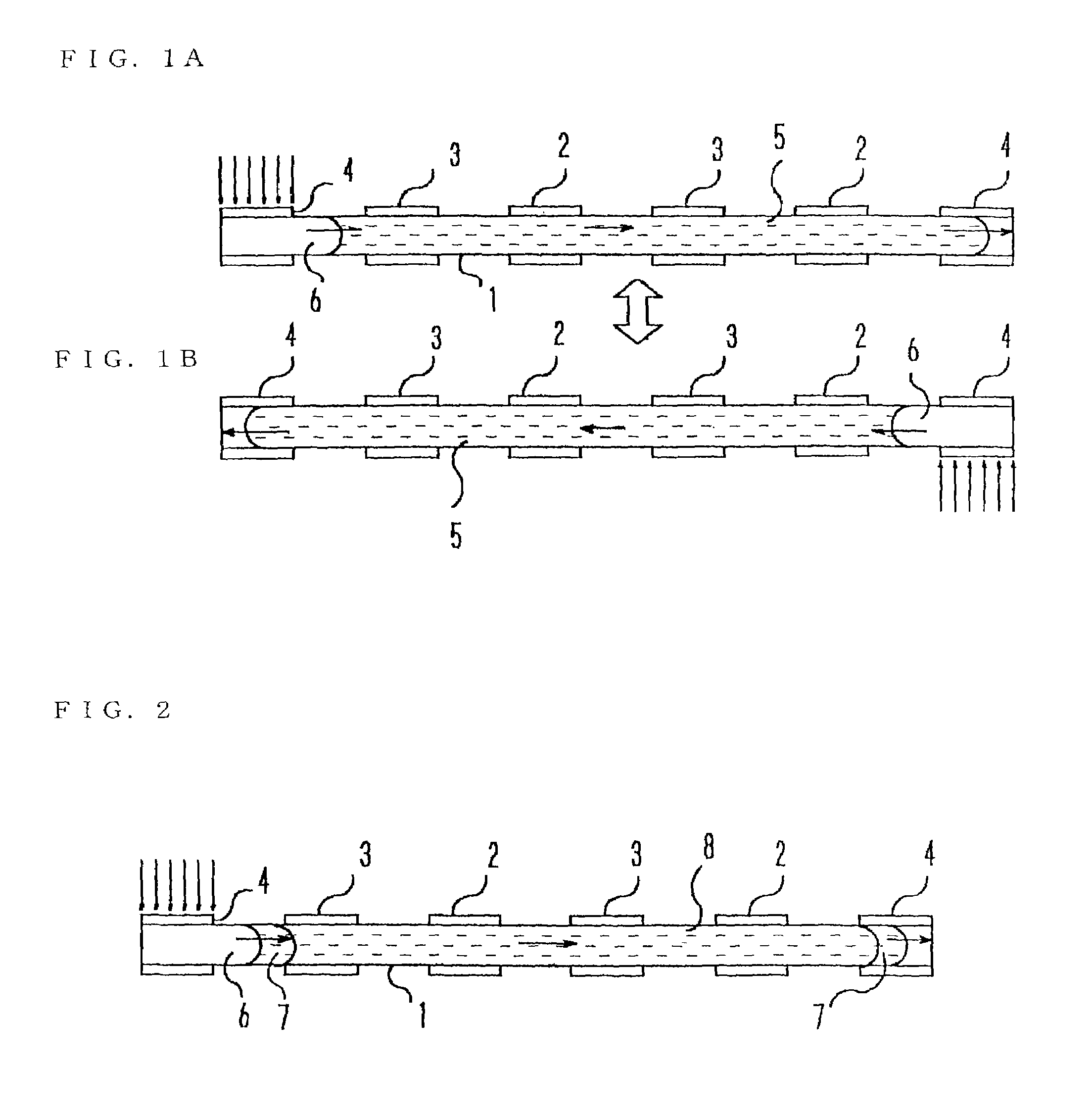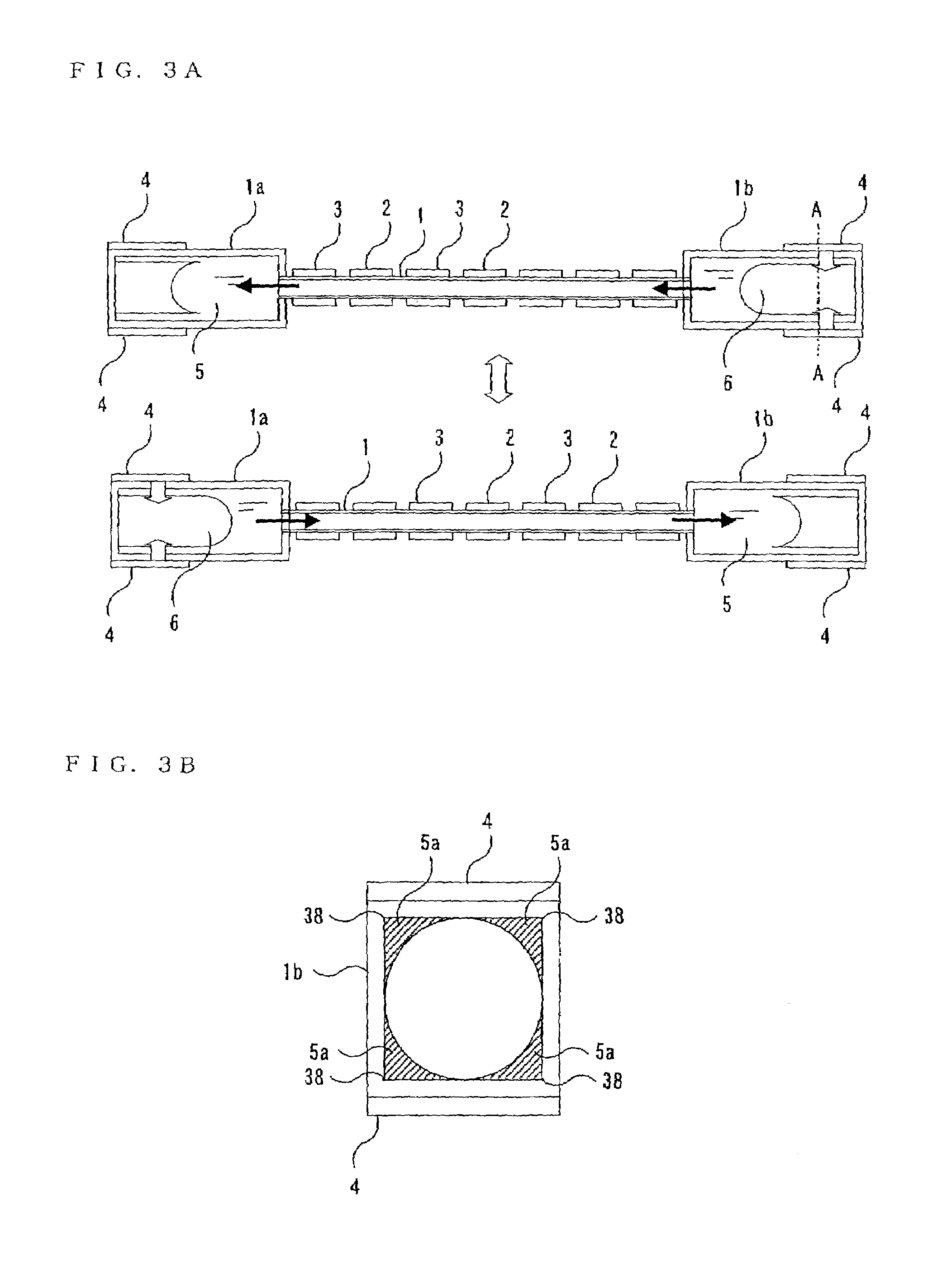Heat transport device, semiconductor apparatus using the heat transport device and extra-atmospheric mobile unit using the heat transport device
a heat transport device and heat transport technology, applied in the direction of insulated conductors, semiconductor/solid-state device details, cables, etc., can solve the problems of increasing the amount of heat radiated from the equipment, reducing the efficiency of reducing the noise of equipment, etc., to achieve high heat transportation and heat radiating capacity, improve temperature controllability, and reduce nois
- Summary
- Abstract
- Description
- Claims
- Application Information
AI Technical Summary
Benefits of technology
Problems solved by technology
Method used
Image
Examples
first embodiment
[0049]FIGS. 1A–1B are sectional diagrams showing the construction of a heat transport device according to a first embodiment of the invention, in which the numeral 1 designates a container. The container 1 is not particularly limited in its physical size. It may be formed of a microtube, for example, in which case, the invention can be applied to a microstructure such as a semiconductor apparatus.
[0050]As shown in FIGS. 1A–1B, appropriate quantities of a liquid 5 and a gas 6 are sealed in the container 1 and one each or more thermal-receiver-type heat exchangers 2 and thermal-radiator-type heat exchangers 3 are alternately arranged side by side on an outer wall of the container 1 along its length, with driving heat exchangers 4 provided at both terminal portions of the container 1.
[0051]The interior of the container 1 forms a fluid channel in which the liquid 5 and the gas 6 move. The thermal-receiver-type heat exchangers 2 are heat generating portions of an electronic apparatus or ...
second embodiment
[0058]In the heat transport device of FIGS. 1A–1B, it is preferable that the internal volume V1 of a portion of the container 1 where each driving heat exchanger 4 is provided be equal to or larger than the internal volume V2 of that portion of the container 1 which is bounded by the center of each thermal-receiver-type heat exchanger 2 and the center of its adjacent thermal-radiator-type heat exchanger 3. It is also preferable that the total volume V3 of the liquid 5 be approximately equal to a value obtained by subtracting the volume V1 from the total internal volume V of the container 1.
[0059]If the heat transport device is designed such that the internal volumes V1, V2 and the volume V3 satisfy the relationships V1≧V2 and V3≈V−V1, the liquid 5 can be caused to oscillate with a large amplitude. When a larger oscillation of the liquid 5 is produced in this fashion, masses of the liquid 5 move between multiple pairs of the thermal-receiver-type heat exchangers 2 and the thermal-rad...
third embodiment
[0060]FIG. 2 is a sectional diagram showing the construction of a heat transport device according to a third embodiment of the invention, in which elements identical or similar to those depicted in FIGS. 1A–1B are designated by the same reference numerals. What is characteristic of the third embodiment is that it employs a combination of a low-boiling liquid 7 and a high-boiling liquid 8 which do not mix and remain separated from each other.
[0061]The low-boiling liquid 7 should be a liquid which shows a large volumetric change with a small amount of heat input. For example, a liquid having a small amount of latent heat and a large difference in density between the liquid and vapor phases is sealed in both terminal portions of a container 1 where the liquid is held in contact with driving heat exchangers 4. On the other hand, the high-boiling liquid 8 should be a liquid which has a higher boiling point than the low-boiling liquid 7, high fluidity and good heat transportation performa...
PUM
 Login to View More
Login to View More Abstract
Description
Claims
Application Information
 Login to View More
Login to View More - R&D
- Intellectual Property
- Life Sciences
- Materials
- Tech Scout
- Unparalleled Data Quality
- Higher Quality Content
- 60% Fewer Hallucinations
Browse by: Latest US Patents, China's latest patents, Technical Efficacy Thesaurus, Application Domain, Technology Topic, Popular Technical Reports.
© 2025 PatSnap. All rights reserved.Legal|Privacy policy|Modern Slavery Act Transparency Statement|Sitemap|About US| Contact US: help@patsnap.com



